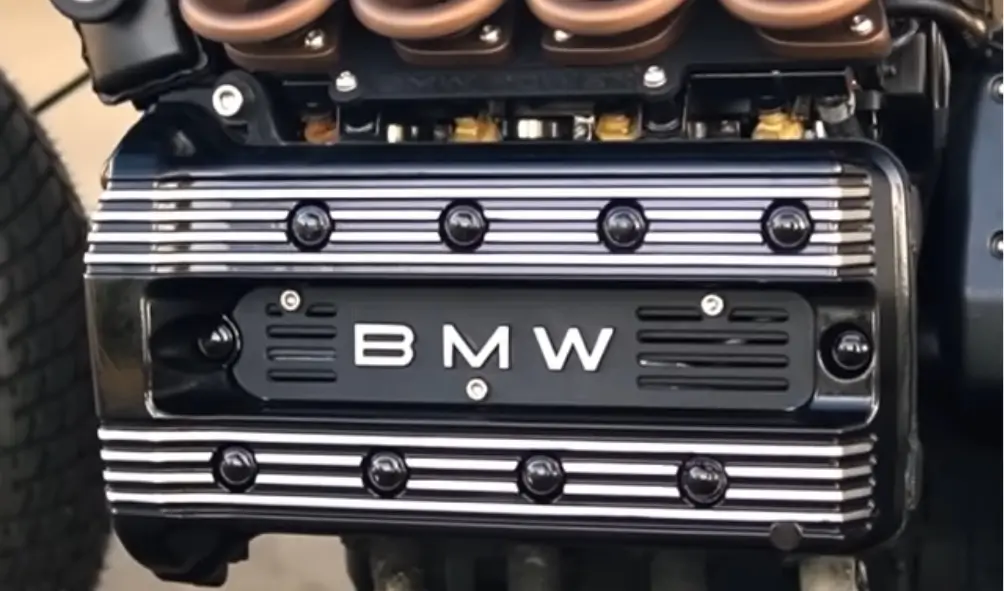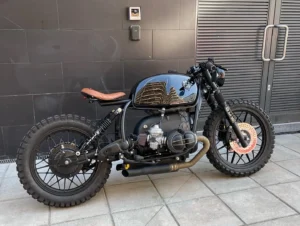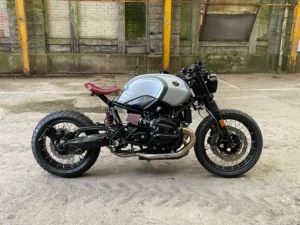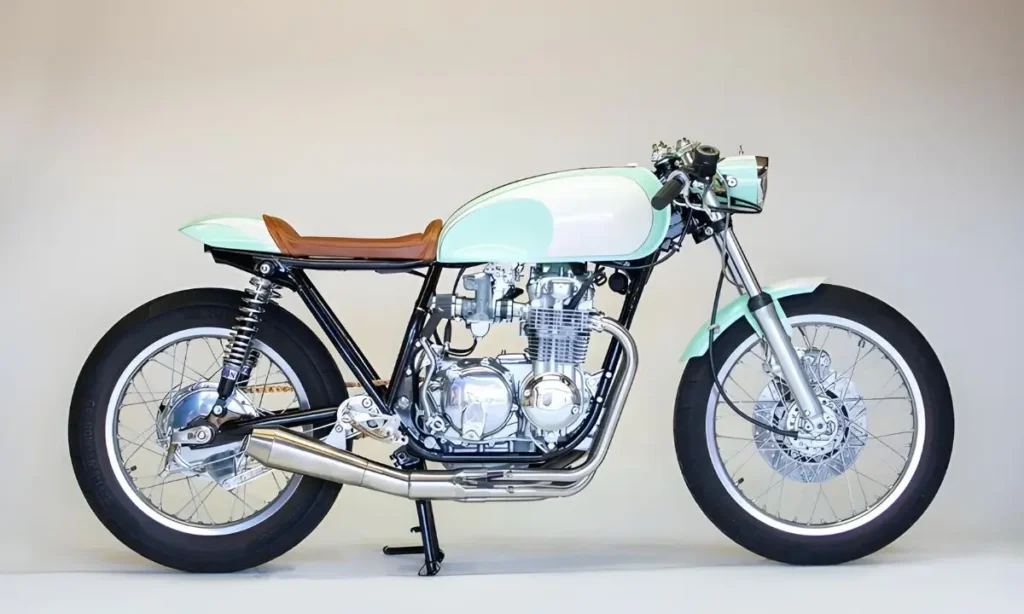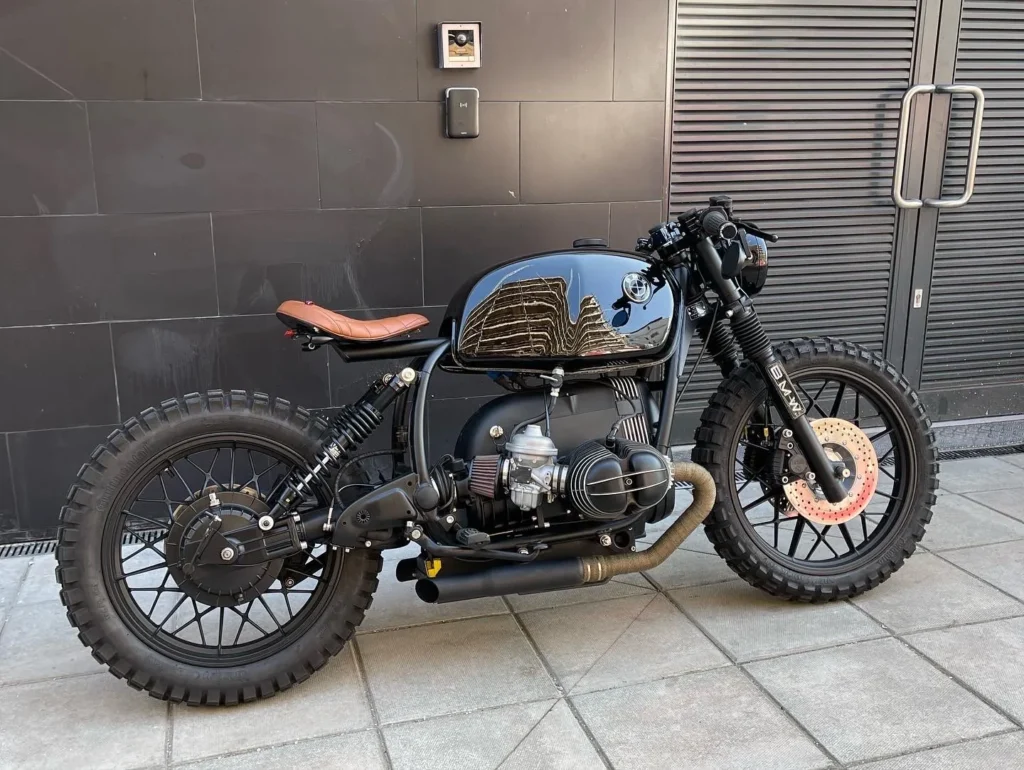Table of Contents
ToggleAs a passionate motorcycle enthusiast, I’ve always had a soft spot for the BMW K100. Its robust engine and timeless design make it a favorite among cafe racer aficionados. However, like any machine, the BMW K100 is not without its quirks. Over the years, I’ve encountered and resolved numerous engine problems with this iconic bike. In this article, I’ll share the top 10 BMW K100 cafe racer engine problems and how to fix them, providing you with detailed, actionable advice to keep your bike running smoothly.
1. Starting Issues
One of the most common problems I’ve faced with the BMW K100 is difficulty starting the engine. If you’ve experienced slow cranks or a no-start situation, you’re not alone. This issue can stem from several causes, including battery problems, a faulty starter motor, or fuel delivery issues.
How to Fix:
- Check and Replace the Battery: Ensure your battery is fully charged and in good condition. If it’s old or weak, consider replacing it with a high-quality battery. Regularly check the battery terminals for corrosion and clean them to maintain a good connection.
- Inspect the Starter Motor: A malfunctioning starter motor can cause starting issues. Test it to see if it needs cleaning, repair, or replacement. Sometimes, the starter motor may just need a thorough cleaning to remove dust and grime that hinder its performance.
- Ensure Proper Fuel Delivery: Check the fuel pump and fuel injectors to ensure they are functioning correctly. Clean or replace any components that are clogged or damaged. It’s also a good idea to check the fuel filter and replace it if it’s dirty.
2. Overheating
Overheating is another frequent problem with the BMW K100, often indicated by the engine running hot, coolant loss, or the temperature warning light coming on. The cooling system is crucial for maintaining engine temperature, and any failure here can lead to serious damage.
How to Fix:
- Flush the Cooling System: Over time, debris and contaminants can clog the cooling system. Flushing it can help remove these blockages. Use a high-quality coolant and follow the manufacturer’s instructions for the best results.
- Clean or Replace the Radiator: A clogged or damaged radiator can’t effectively dissipate heat. Clean it thoroughly or replace it if necessary. Ensure that the radiator fins are straight and free from debris for optimal airflow.
- Replace the Thermostat: A faulty thermostat can cause overheating by not regulating the engine temperature properly. Replacing it can resolve this issue. It’s also a good idea to check the water pump and ensure it’s circulating coolant efficiently.
3. Poor Fuel Efficiency
If you’ve noticed a drop in your BMW K100’s fuel efficiency or black smoke from the exhaust, it could be due to faulty fuel injectors, a dirty air filter, or an incorrect fuel mixture.
How to Fix:
- Clean or Replace Fuel Injectors: Dirty or malfunctioning fuel injectors can disrupt the fuel-air mixture. Cleaning or replacing them can improve fuel efficiency. Using a good quality fuel injector cleaner can help maintain injector performance.
- Replace the Air Filter: A clogged air filter restricts airflow to the engine, affecting fuel efficiency. Replace it regularly. A clean air filter ensures that your engine gets the right amount of air for efficient combustion.
- Adjust the Fuel Mixture: Ensure the fuel mixture is set correctly. Too rich or too lean a mixture can cause poor fuel efficiency. Tuning the carburetors or the fuel injection system can help achieve the optimal fuel mixture.
4. Rough Idling
Rough idling, where the engine runs unevenly or stalls, can be frustrating. This issue is often caused by vacuum leaks, worn spark plugs, or a faulty idle control valve.
How to Fix:
- Identify and Fix Vacuum Leaks: Use a smoke test or listen for hissing sounds to locate leaks. Replace any damaged hoses or gaskets. Vacuum leaks can cause an imbalance in the air-fuel mixture, leading to rough idling.
- Replace Spark Plugs: Worn or fouled spark plugs can cause rough idling. Replace them with new, high-quality plugs. Ensure that the spark plugs are gapped correctly according to the manufacturer’s specifications.
- Clean or Replace the Idle Control Valve: A faulty idle control valve can disrupt the engine’s idle speed. Cleaning or replacing it can resolve this issue. The idle control valve regulates the amount of air entering the engine at idle, so it’s essential for smooth operation.
5. Power Loss
Experiencing reduced acceleration or sluggish performance can be alarming. Power loss in the BMW K100 can result from a clogged fuel filter, worn-out spark plugs, or low compression.
How to Fix:
- Replace the Fuel Filter: A clogged fuel filter restricts fuel flow to the engine. Replace it regularly to maintain performance. A new fuel filter ensures a steady supply of clean fuel to the engine.
- Change Spark Plugs: Ensure your spark plugs are in good condition. Replace them if they are worn or fouled. High-quality spark plugs improve ignition and combustion efficiency.
- Perform a Compression Test: Low compression can indicate serious engine issues. Perform a compression test to diagnose the problem and take appropriate action. Low compression may be caused by worn piston rings or a damaged head gasket, both of which require repair.
6. Electrical Issues
Flickering lights or intermittent electrical failures can be a sign of electrical issues. These problems can be caused by faulty wiring, bad ground connections, or a failing alternator.
How to Fix:
- Inspect and Repair Wiring: Check for any damaged or corroded wires. Repair or replace them as needed. Good electrical connections are essential for reliable operation.
- Secure Ground Connections: Ensure all ground connections are clean and secure. Loose or corroded connections can cause electrical problems. Clean the ground points and tighten the connections to ensure good conductivity.
- Test and Replace the Alternator: A failing alternator can’t charge the battery properly. Test it and replace it if necessary. A properly functioning alternator ensures that the battery stays charged and all electrical systems operate correctly.
7. Oil Leaks
Oil leaks are a common issue with older bikes like the BMW K100. You might notice oil spots under the bike or low oil levels. This problem is often caused by worn gaskets and seals, overfilled oil, or crankcase pressure.
How to Fix:
- Replace Gaskets and Seals: Inspect the engine for worn or damaged gaskets and seals. Replace them to stop leaks. Pay special attention to the valve cover gasket and the oil pan gasket, as these are common sources of leaks.
- Ensure Proper Oil Level: Check the oil level regularly and ensure it’s not overfilled. Overfilling can cause excess pressure and lead to leaks. Use the correct type and grade of oil for your engine.
- Check and Relieve Crankcase Pressure: High crankcase pressure can cause oil leaks. Check the pressure and install a crankcase ventilation system if needed. Proper ventilation helps reduce internal pressure and prevents oil leaks.
8. Noisy Engine
Unusual noises, such as knocking or ticking, can indicate engine problems. These noises can result from valve clearance issues, timing chain problems, or worn bearings.
How to Fix:
- Adjust Valve Clearance: Improper valve clearance can cause noisy operation. Adjust the clearance to the manufacturer’s specifications. Regular valve adjustments ensure smooth and quiet engine operation.
- Inspect and Replace the Timing Chain: A worn or loose timing chain can make noise. Inspect it and replace it if necessary. A new timing chain ensures proper synchronization of the engine’s components.
- Check and Replace Bearings: Worn bearings can cause knocking sounds. Inspect the bearings and replace any that are damaged. Bearings support various moving parts in the engine, so it’s crucial to keep them in good condition.
9. Misfiring
An engine misfire can cause rough running and a lack of power. This issue can be caused by faulty ignition coils, bad spark plugs, or fuel delivery problems.
How to Fix:
- Test and Replace Ignition Coils: Faulty ignition coils can cause misfires. Test them and replace any that are failing. Good ignition coils ensure a strong spark for proper combustion.
- Change Spark Plugs: Ensure the spark plugs are in good condition. Replace them if they are worn or fouled. Regularly changing spark plugs helps maintain engine performance.
- Ensure Proper Fuel Delivery: Check the fuel pump and injectors to ensure they are working correctly. Clean or replace any components that are clogged or damaged. Consistent fuel delivery is essential for smooth engine operation.
10. Exhaust Smoke
Excessive smoke from the exhaust can indicate various issues, depending on the color of the smoke. Blue smoke suggests oil burning, white smoke indicates coolant leakage, and black smoke points to a rich fuel mixture.
How to Fix:
- Replace Piston Rings or Valve Seals: Blue smoke indicates oil burning, often due to worn piston rings or valve seals. Replace these components to resolve the issue. Good piston rings and valve seals prevent oil from entering the combustion chamber.
- Fix Coolant Leaks: White smoke suggests coolant is leaking into the combustion chamber. Inspect the head gasket and cooling system for leaks and repair them. A proper seal in the cooling system prevents coolant from mixing with the fuel.
- Adjust Fuel Mixture: Black smoke indicates a rich fuel mixture. Adjust the fuel mixture to the correct ratio to prevent excessive fuel from being burned. Proper fuel mixture ensures efficient combustion and reduces smoke.
Preventive Maintenance Tips for BMW K100 Engine Problems
To keep your BMW K100 running smoothly and prevent these common engine problems, regular maintenance is essential. Here are some preventive maintenance tips I’ve found helpful:
- Regular Engine Inspections: Periodically inspect your engine for signs of wear or damage. Address any issues promptly to prevent them from worsening. Regular inspections help catch problems early before they become serious.
- Timely Oil Changes: Changing the oil regularly is crucial for engine health. Use high-quality oil and change it according to the manufacturer’s recommendations. Clean oil ensures proper lubrication and reduces wear.
- Maintain the Cooling System: Keep the cooling system in good condition by regularly checking the coolant level and flushing the system as needed. A well-maintained cooling system prevents overheating.
- Clean and Maintain the Fuel System: Regularly clean the fuel injectors and replace the fuel filter to ensure proper fuel delivery. Clean fuel injectors and filters improve fuel efficiency and performance.
Tools and Resources for BMW K100 Engine Problems
Having the right tools and resources can make a big difference when working on your BMW K100. Here are some essentials I’ve found invaluable:
- Essential Tools for DIY Repairs: Basic hand tools, a torque wrench, a compression tester, and a multimeter are essential for most repairs. Having the right tools makes repairs easier and more effective.
- Recommended Parts and Where to Buy Them: High-quality replacement parts can be sourced from reputable online retailers and specialty motorcycle shops. Using quality parts ensures reliable repairs.
- Useful Resources: Forums, repair manuals, and YouTube channels dedicated to the BMW K100 can provide valuable information and support. These resources offer tips, tutorials, and advice from experienced enthusiasts.
When to Seek Professional Help?
While many issues can be resolved with DIY repairs, some problems may require professional assistance. Here are some tips on when to seek help:
- Identifying Issues Beyond DIY Repair: If you’re unsure about the cause of a problem or don’t have the necessary tools and expertise, it’s best to consult a professional. Professionals have the experience and equipment to diagnose and repair complex issues.
- Choosing a Reliable Mechanic or Specialist: Look for mechanics or specialists with experience working on BMW K100s. Ask for recommendations from fellow enthusiasts or check online reviews. A good mechanic can provide quality repairs and maintenance.
- Cost Considerations and Getting Quotes: Get multiple quotes to ensure you’re getting a fair price for repairs. Consider the cost of parts and labor, and factor in the quality of service. Comparing quotes helps you find the best value for your money.
Conclusion
Owning a BMW K100 cafe racer is a rewarding experience, but it’s essential to be prepared for potential engine problems. By understanding common issues and how to fix them, you can keep your bike running smoothly and enjoy many miles of trouble-free riding. Remember, regular maintenance and timely repairs are key to preserving the performance and longevity of your BMW K100.
Frequently Asked Questions (FAQ)
How do I know if my BMW K100 has a starting issue?
If your BMW K100 has difficulty starting, cranks slowly, or fails to start, it likely has a starting issue. Check the battery, starter motor, and fuel delivery system.
What should I do if my BMW K100 is overheating?
Flush the cooling system, clean or replace the radiator, and replace the thermostat.
Why is my BMW K100 experiencing poor fuel efficiency?
Poor fuel efficiency can be caused by dirty fuel injectors, a clogged air filter, or an incorrect fuel mixture. Clean or replace the fuel injectors and air filter, and adjust the fuel mixture.
How can I fix rough idling in my BMW K100?
Fix rough idling by repairing any vacuum leaks, replacing worn spark plugs, and cleaning or replacing the idle control valve.
Is it safe to ride with a misfiring engine in my BMW K100?
No, it’s not safe. Diagnose and fix the issue by testing and replacing ignition coils, changing spark plugs, and ensuring proper fuel delivery.

